Welcome to Ceramic Review
Ceramic Review is the magazine for contemporary and historical ceramics, ceramic art and pottery.
Ceramic Review Issue 328
July/August 2024
Ceramic Review is the magazine for contemporary and historical ceramics, ceramic art and pottery.
July/August 2024
Anne Mette Hjortshøj’s tranquil pots are influenced by the natural surroundings of her island home in Denmark. Jane Audas catches up with the artist before her new show at the Goldmark gallery
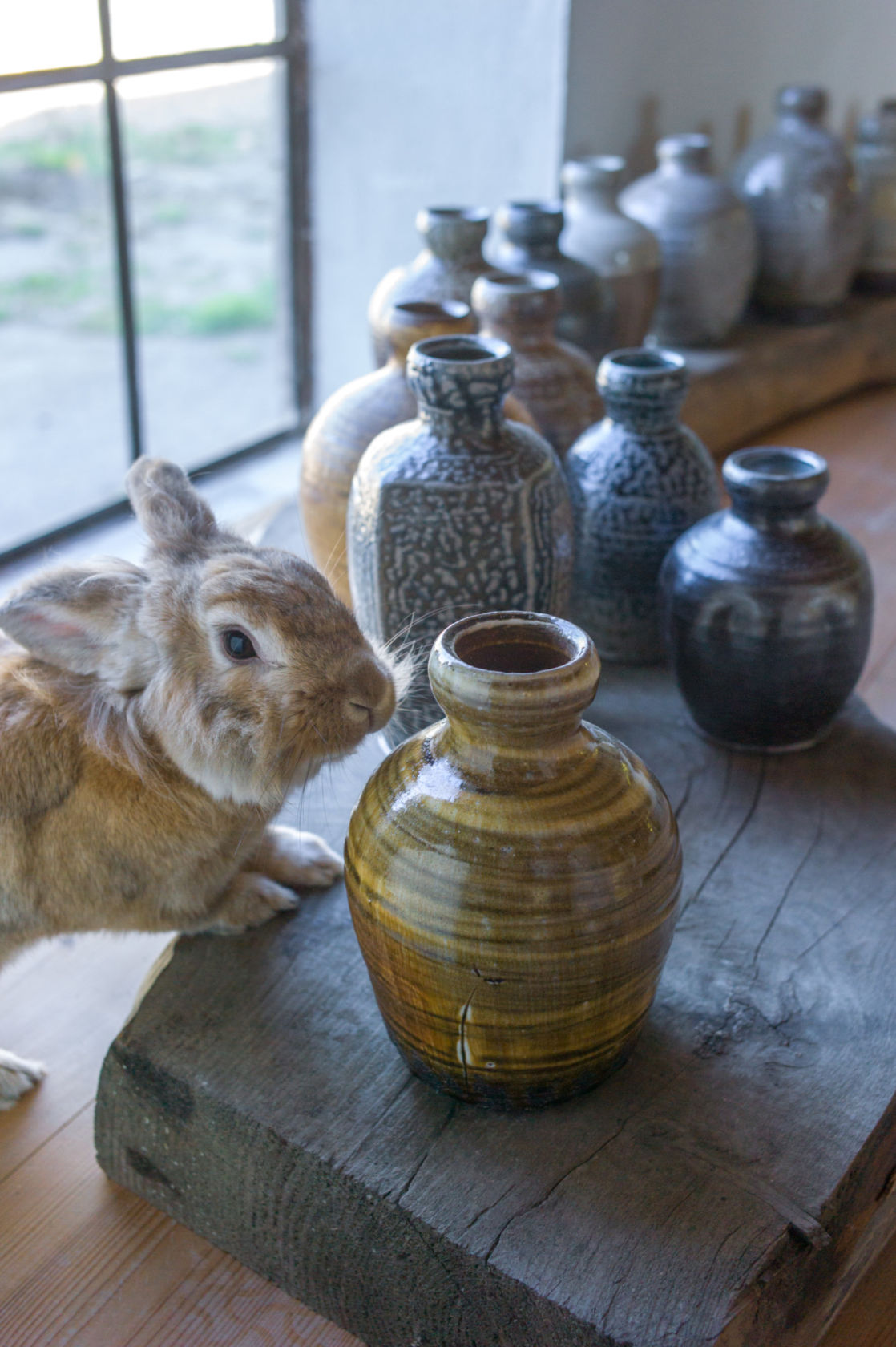
Work by Anne Mette Hjortshøj; Photograph courtesy of the artist and Jay Goldmark, Goldmark Gallery
There is a small island off Denmark called Bornholm, which has been a centre for ceramic production for centuries. Living and working on top of all that history is ceramist Anne Mette Hjortshøj. As we speak, she is preparing to fire a large body of work for her next solo exhibition at the Goldmark gallery in Rutland, England. Hjortshøj has deep personal and professional connections with the UK. She talks about her forthcoming exhibition as much as if she is coming home to see friends and family, as about the fantastic opportunity it presents for her career as a maker. Mike and Jay Goldmark wooed Hjortshøj with several offers before she finally agreed to exhibit with them. ‘I met Mike and Jay at the Earth & Fire ceramic fair in England and they asked if they could show my work,’ she explains. ‘I told them I couldn’t, because it was too scary. I said no twice, but the third time I looked at myself in the mirror and thought: do you really want to do this?’ After two successful exhibitions at Goldmark in 2012 and 2016, Hjortshøj’s new exhibition should seal the deal on her success in the UK, a country that has thoroughly embraced her work. Her connection goes back to 1998 when, while studying for her degree, she undertook a work placement here: ‘They did a very clever thing where I studied – in our second year we were kicked out into a real-life situation to work and study. I went to Wales with Phil Rogers. I spent four months at his studio and then he invited me back to work with him when I graduated.’
Her education in ceramics started earlier than that, though: ‘I was born in Århus, Denmark, in the 1970s, when all the public schools had a studio pottery class,’ Hjortshøj explains. She then attended folk high school: ‘I did a year there and my major was ceramics. But as my drawing skills weren’t the best, I also did a year at drawing school as well. That took me to what was then, in 1997, the first group of students to study at the School of Ceramics and Glass run by British potter John Gibson on Bornholm.’ The school is in the town of Nexø and is part of The Royal Danish Academy of Fine Arts, or KADK, in Copenhagen. It sounds like a quite rarified and special place to study – providing students with both an isolated and concentrated experience.
MAKING TECHNIQUES
After she graduated, Hjortshøj stayed on Bornholm. She now lives and works from a picturesque small holding that she and her husband – Jesper Lindstrom Larsen – are slowly restoring. Her studio is light filled and neatly presented. So, it comes as no surprise to hear Hjortshøj talk about how tightly she organises her work.
As she begins making, she knows exactly how she intends each piece to unfold. She keeps a notebook detailing what shape she wants to make, which clay to use, which slip, what chamber of the kiln she will fire it in and the type of glaze to use. It is an impressive way of organising the things she can control, in the face of the given uncertainties that are the lot of the ceramist. ‘In the first 10 years, I was struggling to get the wood kiln to the same temperature everywhere, she explains. ‘But it feels much better to put pots in the different parts of the kiln working from the clay mixtures that love a particular heat/space. I put little marks underneath my pots – so I know where it will go in the kiln. In a wood kiln you need a mix of taller, smaller and bigger pieces. That’s what I think about when I make a series of work to be fired. It’s very practical.’
Hjortshøj increasingly uses the clay from under her feet in Bornholm. Her husband has been researching the history of clay use on the island – including a tile factory in Hasle that employed over 1,000 people and closed as recently as 1997.
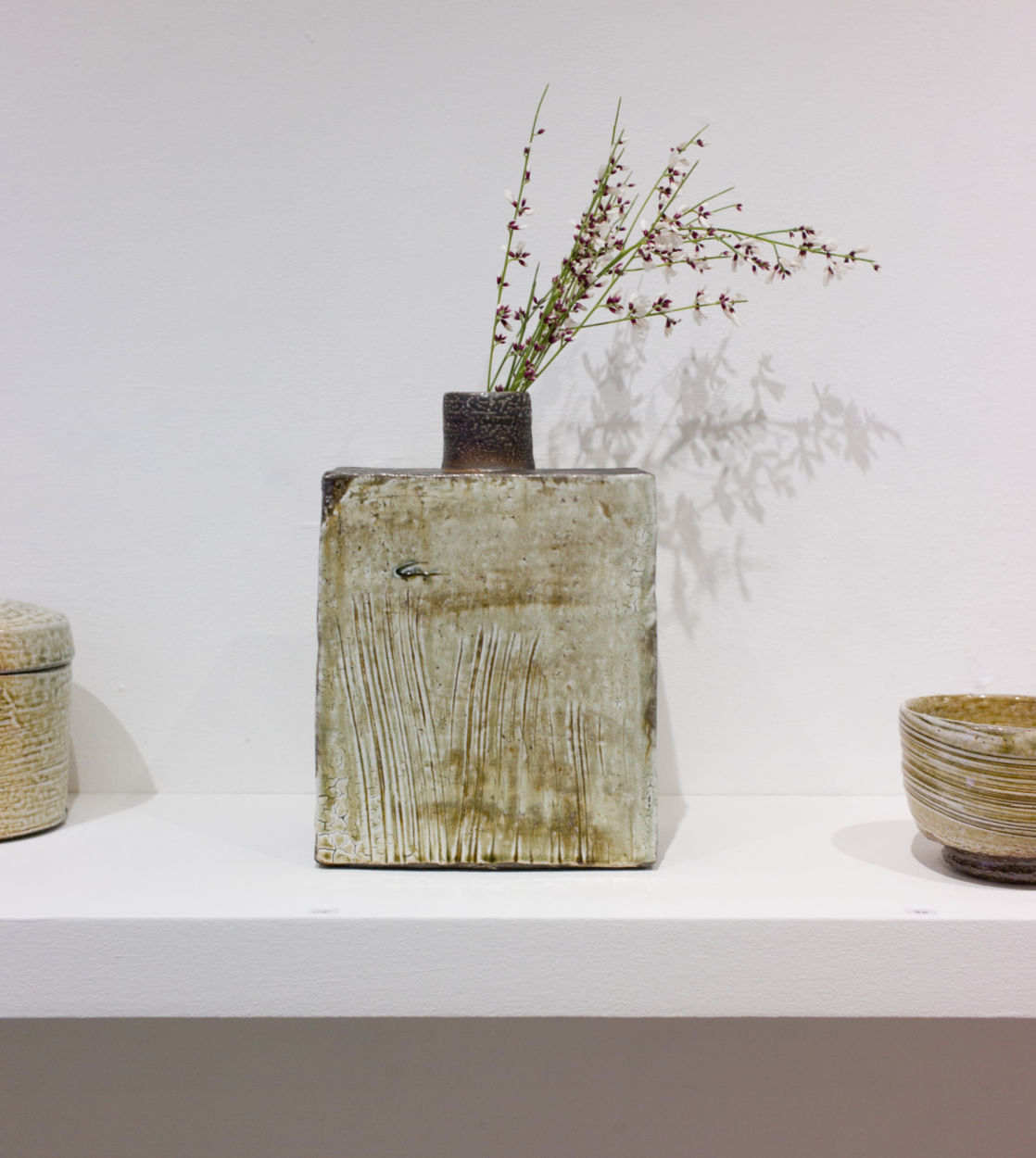
Work by Anne Mette Hjortshøj; Photograph courtesy of the artist and Jay Goldmark, Goldmark Gallery
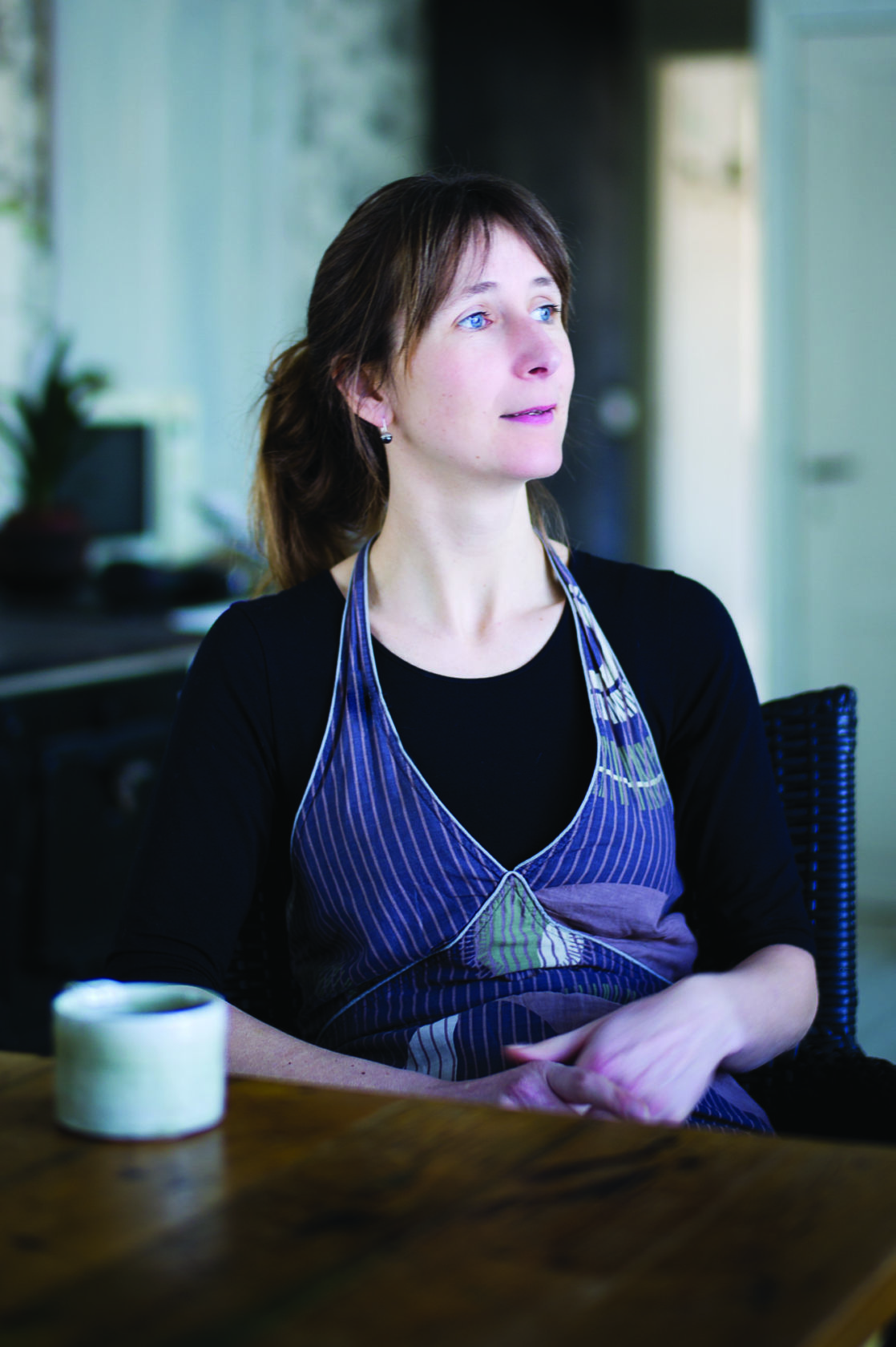
Portrait of Anne Mette Hjortshøj; Photograph courtesy of the artist and Goldmark Gallery
This information is fed directly back into Hjortshøj’s practice: ‘Most of the clays here have a lot of iron in them. There is a completely different feel to it when it melts. And of course, it still has dirty things in it. It’s full of life this clay, full of interesting geology and all sorts of things that aren’t taken away when you process it. All these things will come out through the glazes. There is more life to a glaze when the clay is not clean.’
CLAY, GLAZES AND KILNS
As she gets used to working with the local clay, Hjortshøj has also been experimenting with how far she can take it. ‘For these firings it is the first time I have made big jars out of local clay. Until now I’ve been testing its strength. All the colours are what the flames create; flame is a tool you use when you wood-fire. You can leave some of the responsibility to the firing.’ She is still doing the salt glazing that was her first love, but is also working with a small complement of Asian glazes too, including Tenmoku and Nuka: ‘It’s not about the process, it’s about the result,’ she says. ‘I actually use very few glazes and very few slips, but I use a lot of clay blends. The differences in my work are to do with the clay blends rather than lots of different glazes.’
Along with her clay experimentation, Hjortshøj has three different wood kilns to play with. The first (and biggest) is her Noborigama (climbing) kiln, in which she fires the majority of her work, using the first chamber for raw or glazed pots and the second chamber for her salt glazing. Kiln number two is a small wood-fired test kiln she uses for firing smaller batches of work and for testing new clay and glaze combinations. Kiln three is an anagama kiln built four years ago using just clay. It is part of the Bornholm Wild Clay Research project shared between Hjortshøj and her husband and the ceramists Iwami Shinsuke from Mashiko, Japan, and Anne Charlotte Ohlsson (Hjortshøj’s colleague, with whom she also shares firings on Bornholm).
Hjortshøj describes her practice as having ‘exploded a little bit’ with the introduction of so many possibilities from the local clay and indeed her studio does seem like R&D heaven. She is a maker who likes to take her time researching and learning new materials and techniques. She talks in terms of decades to master new shapes, working day in and day out – something she took from her time with Phil Rogers. ‘It’s really interesting this pottery thing – I am so fortunate that I can do this every day and live on this island, with all that has gone before,’ she exclaims. As for influences, as well as Rogers she cites Mike Dodd for ‘all his glazes’ and Svend Bayer ‘for his shapes’ and the 20th-century Danish ceramist Gutte Eriksen, who had her own connections with the UK and whose work was also, like Hjortshøj’s, brushed with Eastern influences.
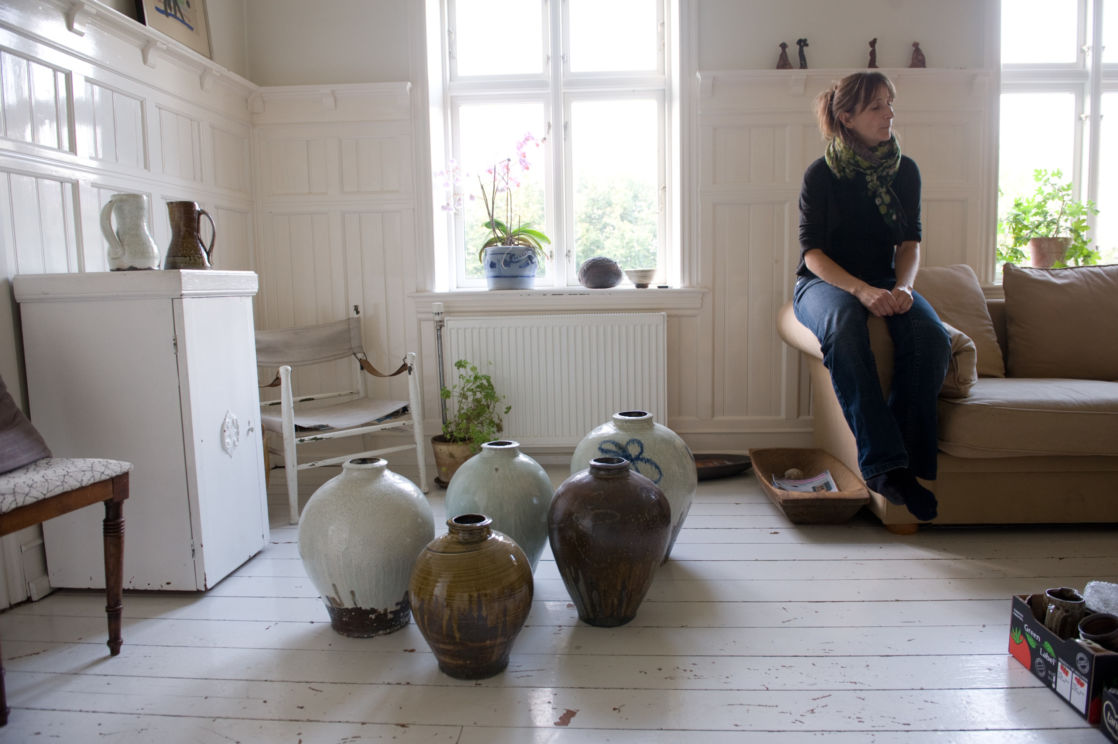
Work by Anne Mette Hjortshøj; Photograph courtesy of the artist and Goldmark Gallery
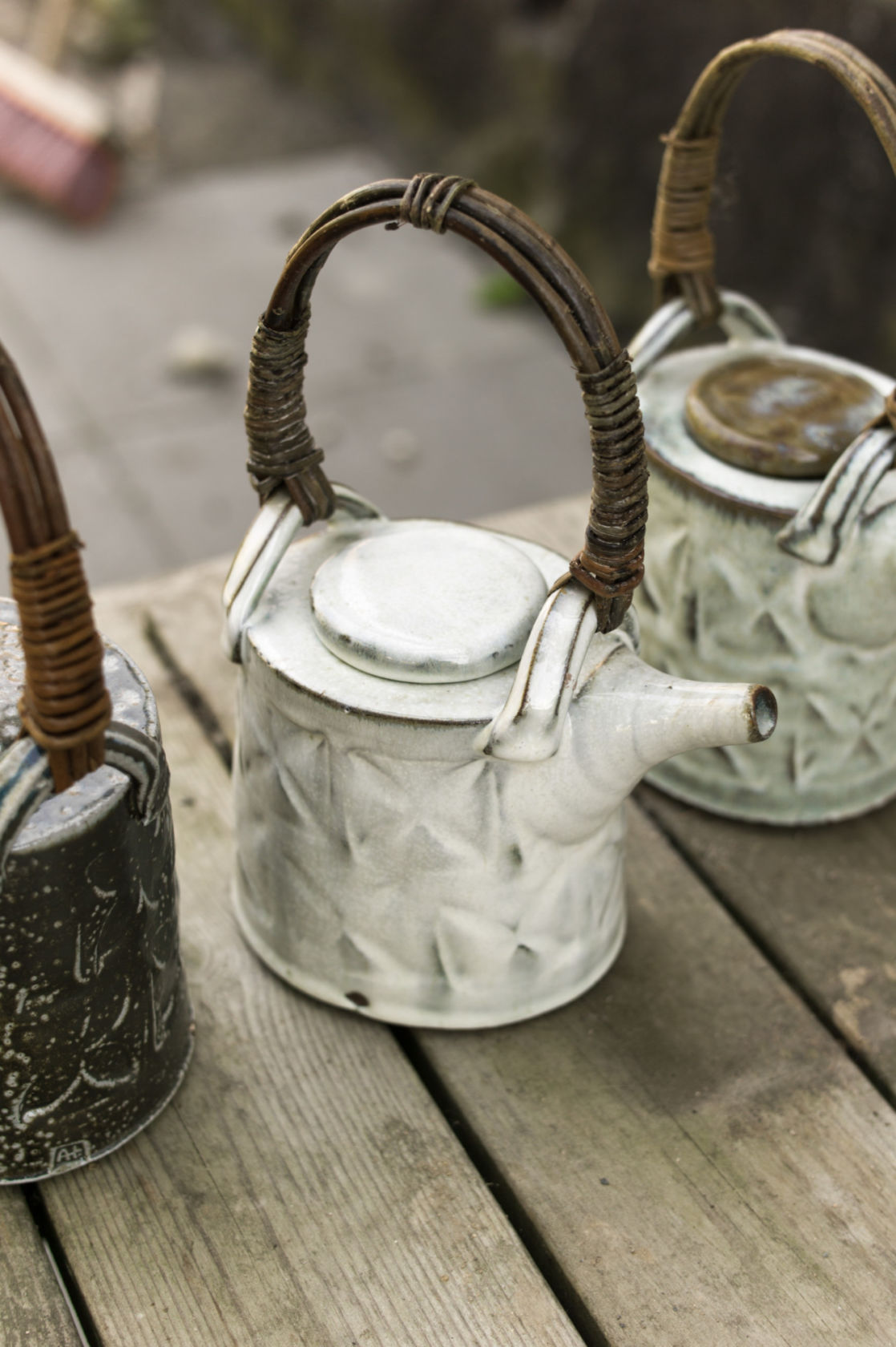
Work by Anne Mette Hjortshøj; Photograph courtesy of the artist Jay Goldmark, Goldmark Gallery
COLLECTING & USAGE
The catalogue to accompany the new exhibition at Goldmark contains an essay by the chef Nigel Slater, a collector of Hjortshøj’s work. In it he writes about how he uses her ceramics to serve his food: ‘The moment I saw a snow-grey bowl, its glaze rough in parts as if touched by a layer of hoar frost, I wanted it. This was the container for a sleepy cauliflower soup or a sage green leek and potato stew. I have a deep caramel glazed bowl in which I often serve a vegetable korma or a creamy curry. The soft ochres cry out for spice, for cumin seeds and cardamom.’
Usage is all too often absent from writing about ceramics. Slater’s text is both endearing and a little bit romantic, full of praise for pots that are beautiful and can be used. The word endearing works too, as a way to describe Hjortshøj herself. And her life making in Bornholm seems, it must be said, just that little bit romantic.
For more details visit annemettehjortshoj.dk. New solo exhibition, Goldmark, from 21 November, goldmarkart.com
Subscribe to read this article in the November/December 2020 issue of Ceramic Review